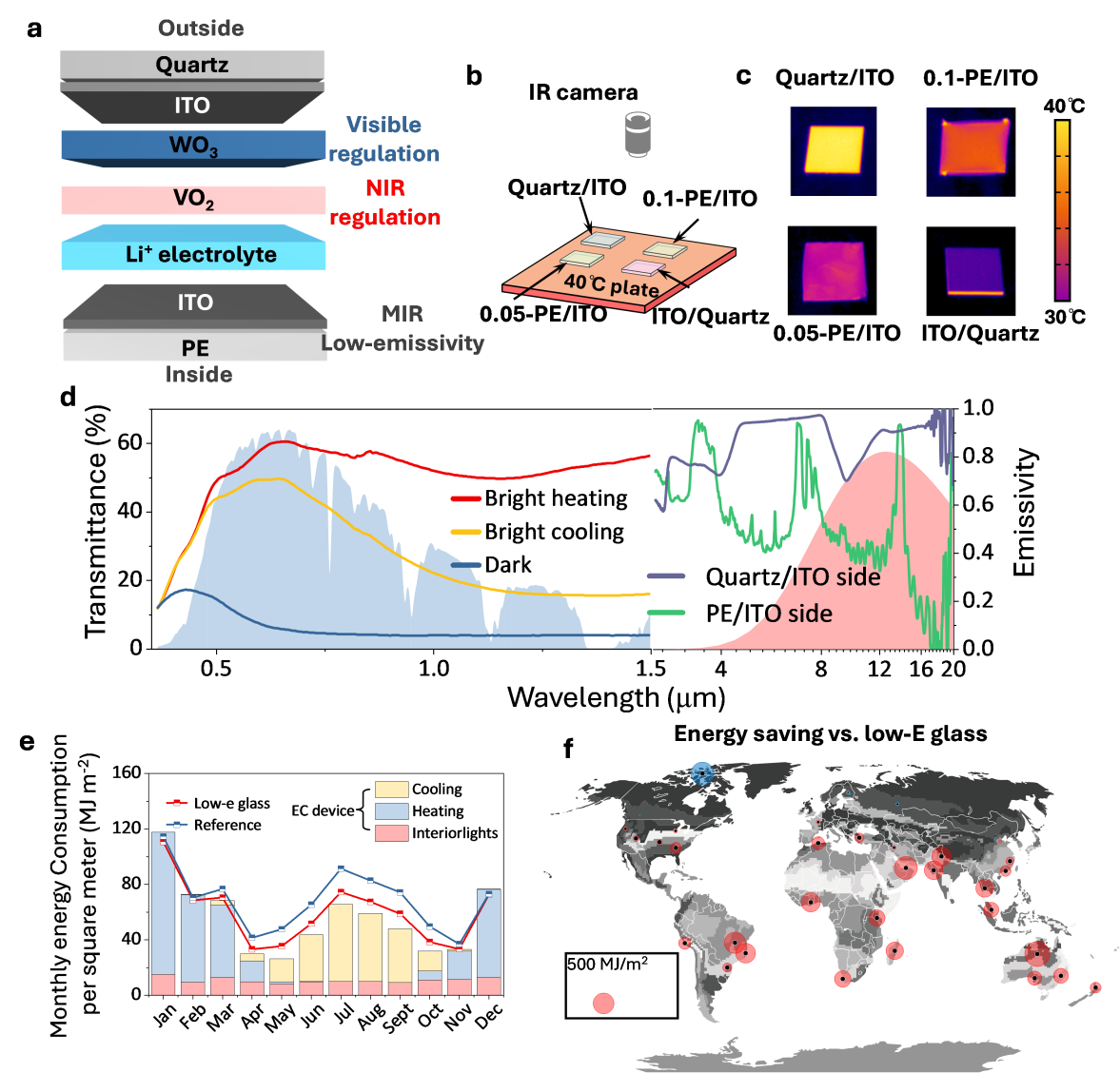Reviewed by Lexie CornerMay 22 2024
A research team led by Prof. Xun Cao from the Shanghai Institute of Ceramics of the Chinese Academy of Sciences, in collaboration with Huazhong University of Science and Technology colleagues, has developed a new kind of electrochromic (EC) structure for energy-saving windows. The study has been published in Nature Sustainability.
 The tri-band electrochromic structure, optical properties, and energy-saving performance. Image Credit: Zewei Shao.
The tri-band electrochromic structure, optical properties, and energy-saving performance. Image Credit: Zewei Shao.
Electrochromic smart windows are a promising technology for lowering building energy consumption because of their ability to dynamically regulate solar radiation in response to external voltage stimuli. Cao's group has concentrated heavily on improving the EC's performance, including contrast ratio and response speed, to encourage the use of EC windows. However, little has been done to lessen the impact of solar radiation and ambient temperature.
With a solid electrolyte, the researchers in this study developed a novel electrochromic smart window system based on a VO2-WO3 tandem film that controls solar heat and sunlight transmittance in a tri-stable manner while also significantly energy-saving.
This structure permits Li+ to diffuse along VO2 and WO3's depth, which may be used to independently control sunlight's ability to transmit light in the visible and near-infrared (NIR) wavelength ranges. Comparing VO2 to WO3, the primary benefit is that the barrier for preserving the state is separated from the barrier for altering the state, maintaining non-volatility.
With this design feature, EC-based windows can minimize the total energy cost of indoor lighting and heat exchange, making them ideal for smart window applications. Simulations indicate that this new ECD offers greater heating and cooling energy savings compared to commercial low-E glass in most climates worldwide.
On a typical clear sunny day, continuous cooling of up to 2–14 °C was achieved in outdoor experiments conducted in Sanya, Hainan Province, and Shanghai.
Journal Reference:
Shao, Z., et al. (2024) Tri-band electrochromic smart window for energy savings in buildings. Nature Sustainability. doi.org/10.1038/s41893-024-01349-z.